Disclosure: This post may contain affiliate links. I may earn a small commission for my endorsement, recommendation, testimonial, and/or link to any products or services from this website.
Cooking the perfect steak is an art form that can vastly be improved when you’re using the right pan. The best pans for steak are versatile and made of materials that allow you to create an irresistible sear and juicy interior.
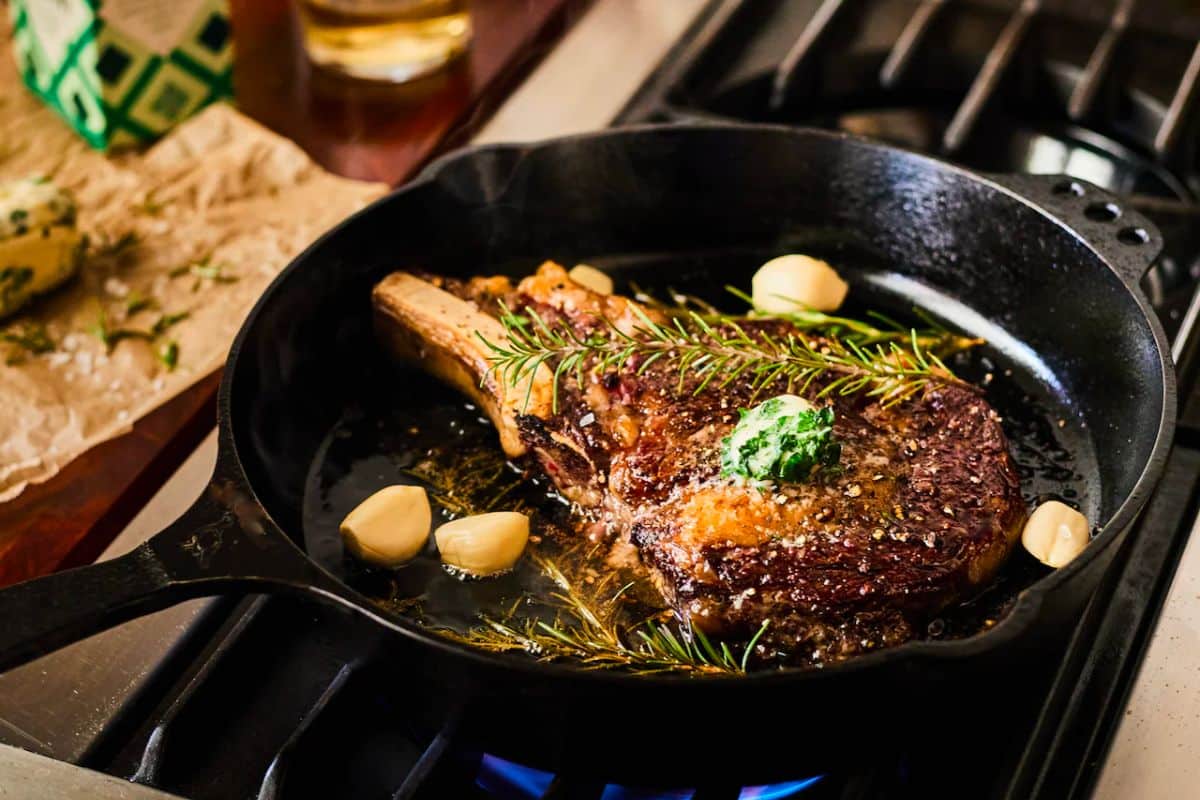
Table of Contents
Blair, who has been cooking steak for 20 years (her favorite is her famous filet mignon!), uses a variety of cast iron pans to cook seared steak. “Thanks to the even and consistent heat retention, nothing compares to the intense heat that you get from a preheated cast iron skillet,” she says. “The crust that develops on the steak (without overcooking the inside) is perfection!”
Our top picks for the best pans for steak include options from Blair’s personal collection, along with other customer-loved options from brands like Le Creuset and Lodge. We also researched other pan types, such as stainless steel, carbon steel, and nonstick, to determine the best for making pan-seared steak.
Below, you’ll find more details about our favorites, along with everything you need to know about choosing the best steak pan for your kitchen.
Our Top Picks:
- Blair’s Enameled Cast Iron Steak Pan: Milo by Kana 10-Inch Ultimate Skillet – $66.75 at Walmart
- Blair’s Classic Cast Iron Steak Pan: Smithey No. 12 Skillet – $210 at Smithey
- Blair’s Budget Cast Iron Steak Pan: Lodge Wildlife Series 8-Inch Cast Iron Duck Skillet – $18.07 at Amazon
- Blair’s Griddle Pan for Steak: Le Creuset Enameled Cast Iron Skinny Grill – $119.95 at Williams Sonoma
Reviews of The Best Pans for Steak
1. Blair’s Enameled Cast Iron Steak Pan: Milo by Kana 10-Inch Ultimate Skillet
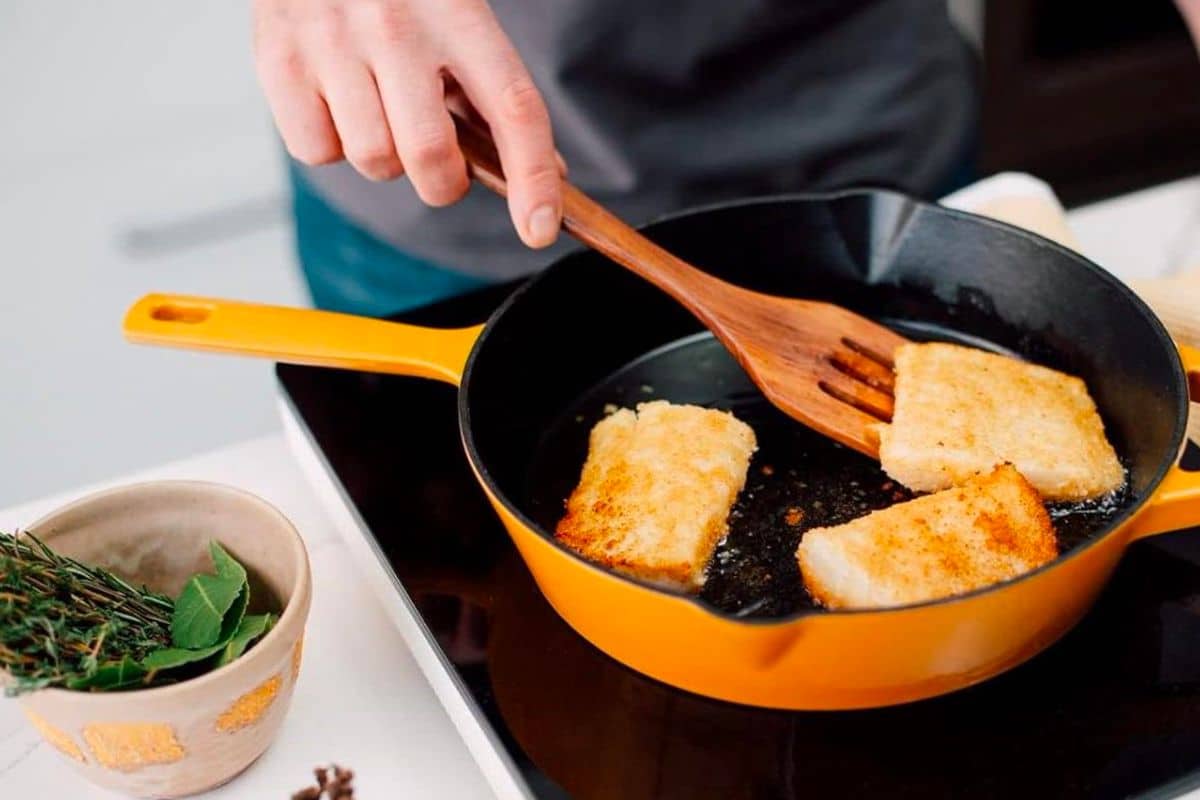
Blair loves using this 10-inch Milo by Kana skillet when she cooks an individual steak. She says you shouldn’t overcrowd your pan, and she’s found that the size of this pan is perfect, giving you plenty of space to get a great sear on your steak.
The pan can handle temperatures up to 500 degrees F in both the oven and grill and is compatible with multiple stovetop types, including induction. Other standout attributes are that the pan is dishwasher safe and made of 40% recycled cast iron.
It’s made from enameled cast iron, which gives you all the benefits of a traditional cast iron skillet without dealing with seasoning the pan. Also, unlike uncoated cast iron, there are no restrictions on what type of foods you can cook in your pan. This means that if you want to make a slower-cooking acidic sauce in the same pan as your steak (think something with tomatoes or lemon), you can without getting any kind of discoloration or change in taste in your food (this can happen in uncoated cast iron pans).
The Specs:
- Maximum temperature: 500°F
- Weight: 6 lbs
- Dimensions: 10 x 10 x 2.5 inches
- Induction compatible: Yes
- Care: Dishwasher or hand wash
The Pros:
- Has a large selection of colors
- Made from recycled materials
- Enameled coating doesn’t require seasoning or doesn’t have any food restrictions
- Great size
The Cons:
- Pricier than an uncoated cast iron skillet
- Enameled coating may peel or chip over time
Buy the Milo by Kana 10-Inch Enameled Cast Iron Skillet:
2. Blair’s Classic Cast Iron Steak Pan: Smithey No. 12 Skillet
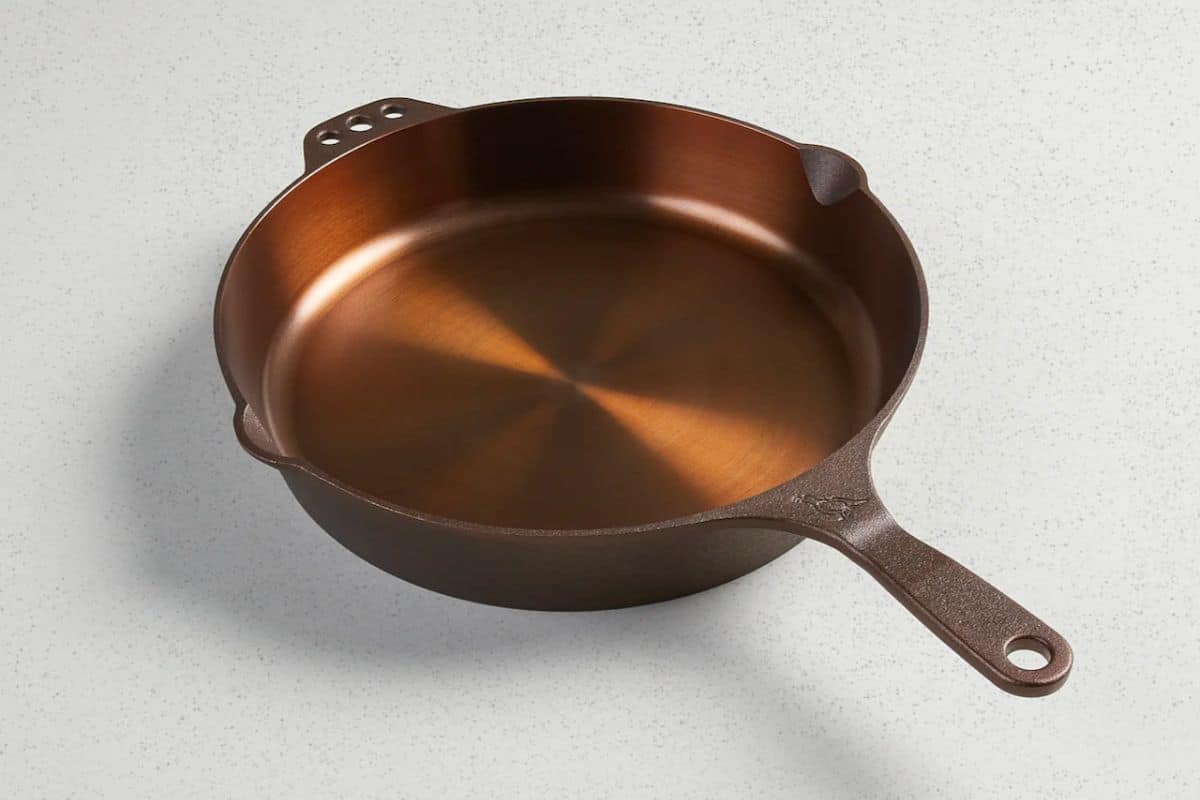
After owning the Smithey No. 12 Skillet for five years, Blair says this is the best cast iron pan for cooking steak. She absolutely loves using it to make steaks for the whole family: “It just gets better with age,” she says.
The 12-inch diameter is large enough to cook steaks for a family of four, while its aesthetics are definitely something to rave about. It has a smooth finish on the inside, a beautiful brass interior, and convenient holes in the handles that allow you to hang it on display.
This Smithey model is pre-seasoned by hand with two to three layers of grapeseed oil, which has a high smoke point (up to 420 degrees F). This pan can be used on the grill as well as gas, induction, and electric stovetops, but you’ll just want to note that it’s not dishwasher-safe.
The No. 12 can also be engraved and boasts a lifetime guarantee, meaning that if the pan is defective or underperforms after normal use, the brand is happy to fix or replace the item.
The Specs:
- Maximum temperature: Not listed
- Weight: 8.7 lbs
- Dimensions: 18.2 x 12 x 2.2 inches
- Induction compatible: Yes
- Care: Hand wash
The Pros:
- Pre-seasoned by hand
- Features smooth interior finish
- Comes with a lifetime guarantee
- Gorgeous look
The Cons:
- Expensive
- Maximum temperature is unclear
- Requires hand washing and frequent seasoning
What others are saying
Bon Appetit considers Smithey’s line of cast iron skillets to be some of the best on the market.
Buy the Smithey No. 12 Skillet:
3. Blair’s Budget Cast Iron Steak Pan: Lodge Wildlife Series 8-Inch Cast Iron Duck Skillet
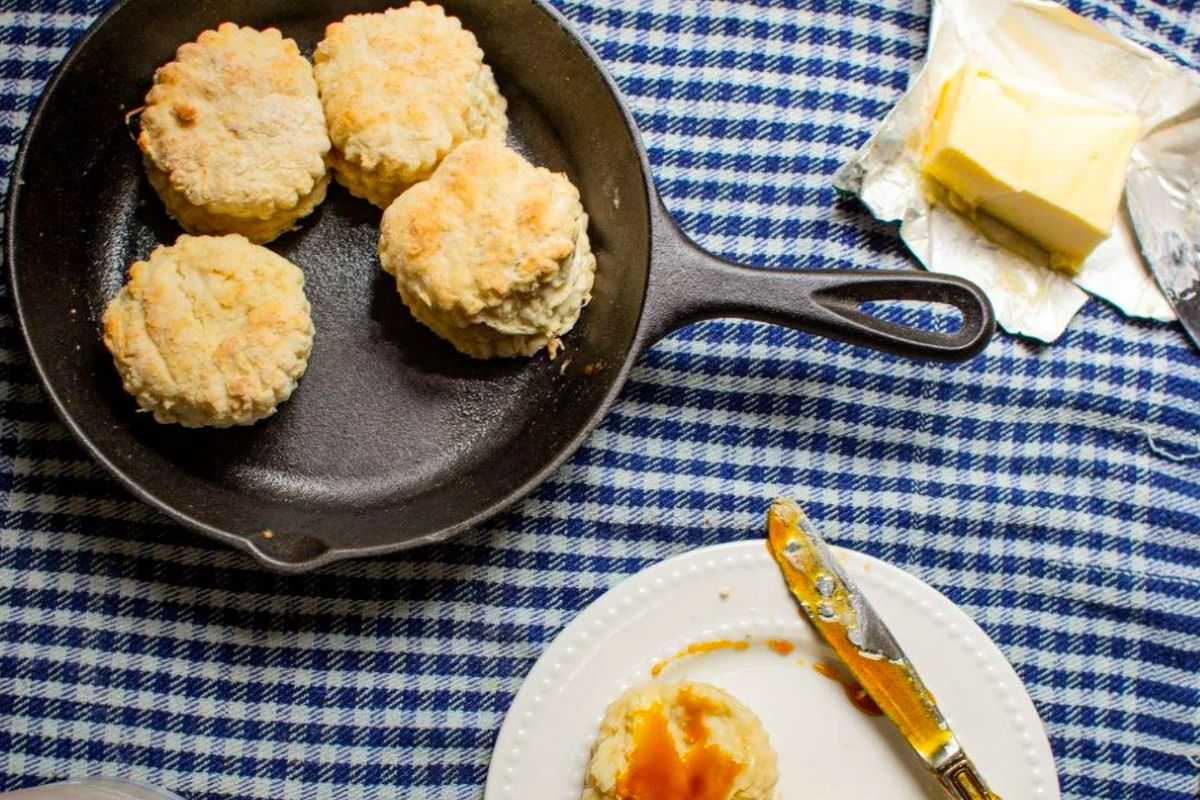
Blair knows that not everyone wants to spend a ton of cash on a pan, so if you’re shopping on a budget, she recommends a Lodge cast iron skillet. She says that it “works nicely” when cooking one to two steaks.
Lodge has been in the cast iron-making business for more than 100 years, earning the brand a reputation as being a go-to source for cast iron cookware. This 8-inch skillet is pre-seasoned with high-smoke-point vegetable oil (up to 400 degrees F) and can be used on the grill, in an oven, atop an induction stovetop, or even over a campfire.
This beloved cast iron pan even has an etching of a mallard floating in a pond at the bottom as part of the brand’s Wildlife series. Don’t worry, though, this doesn’t affect the pan’s heat retention or distribution.
The Cast Iron Duck Skillet does require regular seasoning, but with the right care, it can build up a great surface that will become nonstick and last a lifetime.
The Specs:
- Maximum temperature: 500 degrees F
- Weight: 3.3 lbs
- Dimensions: 12.75 x 8.68 x 1.87 inches
- Induction compatible: Yes
- Care: Hand wash
The Pros:
- Pre-seasoned with high-smoke-point oil (vegetable)
- Lighter in weight compared to other cast iron pans
- Comes with unique animal etching on bottom of the pan
- Affordable
The Cons:
- May be too small for family cooking
- Requires regular seasoning
- Maximum temperature unclear
What others are saying
The Food Network, Food & Wine, Forbes, The New York Times, and CNN agree that this legacy cast iron brand makes the best cast iron skillets.
Buy the Lodge Wildlife Series 8-Inch Cast Iron Duck Skillet:
4. Blair’s Griddle Pan for Steak: Le Creuset Enameled Cast Iron Skinny Grill
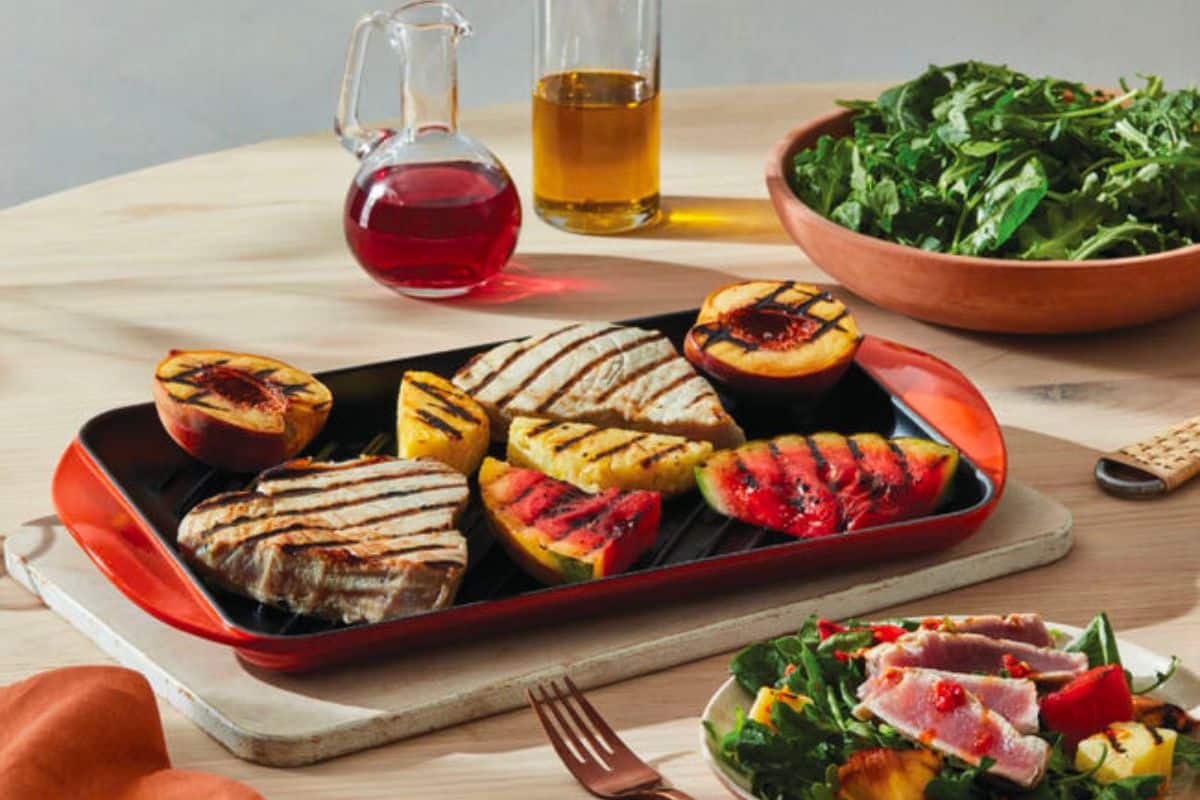
Blair loves using the Le Creuset Enameled Cast Iron Skinny Grill when making dishes like Grilled Steak Tips. The ridges that line the pan give you the opportunity to get those irresistible grill sear marks without having to go outside and fire up the grill.
This cast iron pan can be put in the oven, broiler, or an outdoor grill up to 500 degrees F. It can also fit over one burner (including induction burners!) and is long enough to accommodate multiple steaks, making this great for cooking for two or more.
This cast iron is enameled and dishwasher safe, though the brand recommends hand washing for longevity. To get this grill pan started, preheat the empty grill for five to ten minutes, brush with oil, then place your steaks to get that satisfying, sizzling sear on your meat. Because of the porcelain enamel coating on the outside of the pan, the brand recommends you keep the heat at medium at all times.
The Specs:
- Maximum temperature: 500°F
- Weight: 7 lbs
- Dimensions: 15 x 8.5 x 1.25 inches
- Induction compatible: Yes
- Care: Dishwasher safe, but hand washing is recommended
The Pros:
- Can create grill-like sear marks
- Comes in vibrant colors
- Can be put in the dishwasher
- Large capacity
The Cons:
- Doesn’t come with a long handle
- Should only be used on medium heat
Buy the Le Creuset Enameled Cast Iron Skinny Grill:
Others We Researched
GE Nonstick Broiler Pan with Rack
With all this talk of getting a good sear, some might be surprised to know that you can cook a great steak in the broiler. Blair says this GE model is ideal for flank or skirt steak (like her Marinated Flank Steak). It’s simple, affordable, and will do the trick, especially because it’s made of carbon steel, the cousin of cast iron. With its ability to heat up quickly, you can cook your steak in minutes. Plus, unlike many pans used for steak, this is dishwasher safe. The only downside is that you will barely get a sear with this broiler pan, so we recommend snagging an option from the list above if you want to mimic the grill. The GE Nonstick Broiler Pan with Rack is available at Amazon for $26.
All-Clad D3 Stainless Bonded Fry Pan, 12 inch
One of the best stainless steel pans for steak is the All-Clad D3. All-Clad stainless steel cookware is consistently lauded by food professionals, from critics at Food & Wine and the New York Times to pro chefs like David Chang and Alison Roman. The All-Clad D3 has an aluminum core, giving the pan the ability to heat up quicky and offer heat distribution. With that said, cast iron tends to be better for cooking thanks to its even heat distribution for that grill-like sear, so you may not get the best results with a stainless steel pan. The All-Clad D3 Stainless Bonded Fry Pan is available at Amazon for $99.96.
Lodge CRS10 Carbon Steel Skillet, 10-inch
Carbon steel skillets offer all the benefits of a traditional cast iron without the weight. Lodge’s carbon steel skillet, like its other famous cast iron pans, comes pre-seasoned and can be used in the oven, grill, or atop a campfire. Even though the carbon steel skillet doesn’t boast the same heat retention as the brand’s cast iron, you’ll still get an excellent sear, and if taken care of properly, it will last a lifetime. However, it’s pricier than the other Lodge model on the list, and we prefer the other for its size and fun design. The Lodge CRS10 Carbon Steel Skillet is available at Amazon for $39.90.
KitchenAid Hard Anodized Nonstick Square Grill Pan/Griddle
If you don’t want to spend a ton of money on a grill pan (like my pick from Le Creuset above), I recommend snagging this affordable, smaller option from KitchenAid. The brand’s hard anodized nonstick square grill pan features ridges that allow you to give your steaks grill marks indoors. Plus, the nonstick coating makes for much easier cleanup compared to stainless steel and cast iron. But you’re less likely to get a satisfying sear since a nonstick pan can only handle low to medium temperatures. Plus, this is not induction-compatible. The KitchenAid Hard Anodized Nonstick Square Grill Pan/Griddle is available at Amazon for $34.97.
Why You Can Trust Us
I’m Rachel Center, a food writer who has covered and tested kitchen products for more than two years. I’ve written about cookware, bakeware, kitchen gadgets, meal prep tools, and more, and I have interviewed chefs, bakers, sommeliers, and baristas for sites like Food & Wine, Real Simple, and The Kitchn. I’ve also been an avid home cook for over 10 years, testing out new sweet or savory recipes in my kitchen daily.

To find the best pans for steak, Blair and I utilized her expertise as a recipe developer and my extensive knowledge of food products and brands. She took inventory of her favorite pans for steak, citing what she loved the most about them. After that, we checked out top-selling options, taking customer reviews into account along with the material, size, maintenance, versatility, and price.
What to Know About Pans for Steak
The best pans for steak are made of materials that allow for a great sear on the meat. They are also versatile, meaning they can handle the high heat of a stovetop, oven, grill, and even campfires. You’ll also want to factor in how often you cook steaks, how many people you prepare steaks for, how you like your steak cooked, the time you’re willing to devote to maintaining the pan, and your budget.
Material
Blair believes that the best way to cook a steak is with a cast iron skillet. Cast iron skillets excel at cooking steak because of the excellent heat retention: Once cast iron is heated up, it holds onto that heat for much longer than other pan materials, such as stainless steel. This makes for a great sear, especially if you prefer a rare to medium-rare doneness (after that, it should go in the oven).
Stainless steel provides a nice sear, too, and it can handle high heat, so it can safely go in the oven if longer cooking times are needed. It’s also significantly lighter, doesn’t require seasoning, and can handle slow-cooking acidic foods.
Enameled cast iron is kind of like a happy medium between the two: it can handle acidic foods and doesn’t require seasoning, either. It does, however, get stained more easily, which can make cleaning a bit of a hassle.
Seasoning
Seasoning refers to the coating on a cast iron skillet that builds up to create a nonstick surface. Seasoning your pan does take some extra effort, so you have the option to save yourself the trouble right off the bat by getting a pre-seasoned pan, like Blair’s favorite Smithey No.12 Skillet.
After that, Blair recommends seasoning your cast iron pan from time to time. If you notice that your cast iron does not have an even coating (AKA, there are some dry patches), give it a good season. Just make sure after each cook, you clean and thoroughly dry the skillet since this helps prevent rust from occurring.
“Use a chainmail scrubber and hot water to scrape off any browned bits, and then thoroughly dry the skillet over low heat. Do not soak your cast iron pan!” she says.
How to Season a Cast Iron Skillet
Blair seasons her pan by applying a layer of Lancaster Cast Iron Seasoning with a paper towel. (If you don’t want to buy seasoning, you can use canola oil instead.) Then, she places the pan upside down on top of a baking sheet and puts it in the oven at 350 degrees F for an hour.
Carbon steel also requires seasoning, but enameled cast iron, stainless steel, and nonstick pans don’t.
Size
Unless you are planning on using your steak pan for more than cooking steak, such as making cornbread or sautéing veggies, there’s no need to get a large skillet if you are usually just cooking a steak for yourself and a loved one. Lodge makes pans as small as 3.5 inches, which saves folks who make single servings of steak both money and space in the kitchen.
If making steak is a special occasion for you, one that’s usually shared with friends and family, you can get a skillet that is 10 or more inches. You can cook multiple steaks in a cast iron, or for more even heat distribution, consider a stainless steel pan.
Price
One of the benefits of uncoated cast iron and carbon steel skillets is that they’re relatively affordable. You don’t always have to splurge to get great results.
However, if you’re in the market for something more premium, there are definitely options available. Enameled cast iron, which usually comes in vibrant colors, does come with a higher price tag, often more than $100. Quality small stainless steel pans usually start at $50, while nonstick stainless steel pans are around $60 or more.
Different Cuts of Steak

Blair has been cooking steak for 20 years, so she knows a lot about the different cuts and how best to cook them. Here are some of her best tips.
- Filet Mignon: “Filet mignon is generally the most expensive cut of beef, and is so special because it is not only the most tender cut, but it is also relatively scarce since each animal only has a small amount of this particular type of meat,” she told me. “A filet mignon is best when cooked to medium doneness or less — often medium-rare is considered ideal. While the filet mignon is the most tender cut of beef, it’s not necessarily as flavorful as other parts of the animal.” Blair likes to cook filet mignon on the grill or in an uncoated cast iron pan to get a great sear. However, to ensure that your sear doesn’t turn into burn, she recommends getting to the sear you want, then putting it in the oven to finish cooking to your desired level of doneness. Check out her recipe for cooking filet mignon in a cast iron pan.
- New York Strip: “The New York Strip is often called ‘the ultimate griller’s steak’ because this cut is best when cooked quickly over very high heat (unlike tougher cuts that need low and slow heat),” Blair says. “The steak is naturally tender and therefore shines with a quick sear on the outside that doesn’t overcook the inside. With high-quality ingredients, our goal is to just enhance the natural flavor of the steak — so we’re keeping it really simple. A hot grill and a little bit of seasoning is all it takes for an amazing grilled New York Strip Steak recipe.” Get all the details on cooking this cut with Blair’s Grilled New York Strip Steak Recipe.
- Flank Steak: “Even though it’s naturally tough, the meat becomes nice and tender when prepared properly. This cut benefits from marinating and is best enjoyed grilled over high heat or slow-braised,” she says. “A good marinade is one way to bring out the best flavor and texture in flank steak. This tough cut of beef generally does well with some extra tenderizing, which can be accomplished by hand with a meat tenderizing mallet, chemically using an acidic marinade, or by cooking the steak ‘low and slow’ to gradually break down its dense connective tissue and muscle fibers.”
- Skirt Steak: According to Blair, this is the best cut of meat to use for her yummy recipe for Steak Fajitas, in addition to flank steak. “The skirt steak is a little bit more tender than the flank steak, so it can be cooked more without getting tough or chewy (in other words, choose skirt steak if you prefer your meat well done),” she says.
- Round Steak: “[Round steak] is a moderately tough cut of meat because it includes a lot of connective tissue and comes from a heavily exercised muscle,” she says. “The lack of fat and marbling makes the round dry out when cooked with dry-heat cooking methods like roasting or grilling, so this cut is best suited for slow cooking methods with gentle, moist heat. The low-and-slow cooking process helps to tenderize the meat, maintain its moisture, and results in fork tender steaks.”
- Ribeye: “This beautiful beef is simply seasoned with salt and pepper and pan-fried in a [cast iron] skillet for just a few minutes on each side. You’re looking for that great flavorful sear on the outside,” she says. “The key is just allowing the high-quality ribeye steak to speak for itself! There’s no need to fuss with too many marinades, seasonings, or complex steps. The meat is delicious on its own, so just a bit of garlic, butter, salt, and pepper is all it takes to highlight the natural beauty of the product.”
What’s the Best Way to Cook Steak?
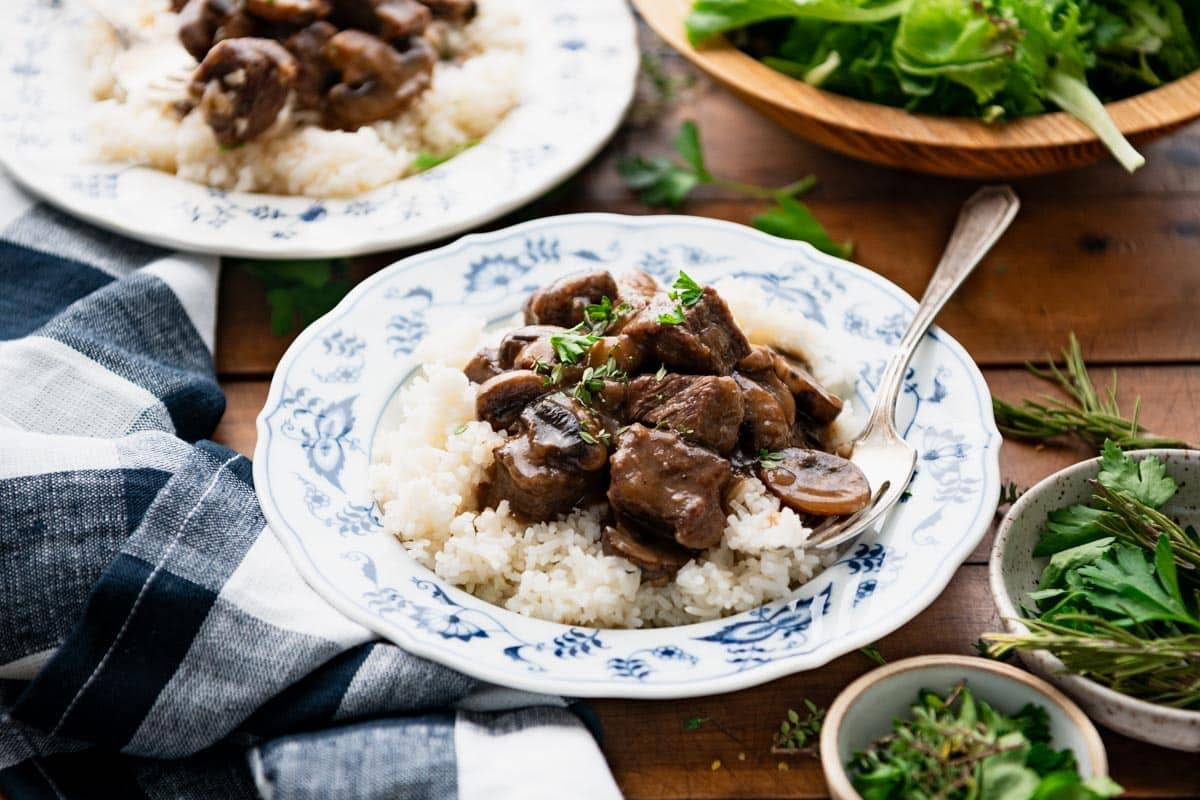
The best way to cook steak depends on the cut of meat you’re using and personal preference. Blair loves cooking New York Strips on the grill, filet mignons in a cast iron skillet, and flank steaks in a slow braise. She also prefers cooking with a cast iron pan since it provides the best sear.
For filet mignon, Blair likes to bring her meat to room temperature for 30 minutes before putting it in an oiled cast iron skillet. She lets it sear for about 3-4 minutes per side, then finishes it in the oven at 425 degrees F for three additional minutes. How long it cooks in the oven depends on your desired level of doneness.
What’s the Best Steak Pan for an Induction Hob?
The best steak pans for induction hobs are ones made of cast iron (both uncoated and enamel), carbon steel, stainless steel, and nonstick. Materials that generally aren’t compatible with induction include copper, aluminum, and glass.
However, these aren’t always guaranteed. Always be sure to check with the manufacturer that a pan is induction-compatible before buying. If a pan is not listed as being compatible with induction, it’s safe to say that it’s not.
How to Sear a Steak
Cast irons are the best pans for searing steak. Blair likes to sear her steak for 3-4 minutes on each side in her pan. Before searing, Blair recommends adding plenty of oil and butter to prevent sticking. You can preheat the pan for 5-10 minutes, then put the steaks down and let them sit undisturbed, then flip and repeat.
How Long to Cook a Steak
“How long you should cook your steak depends on the size, thickness, and temperature of your meat when you cook it, as well as on your preferred level of doneness,” Blair told me. Doneness is dictated by the meat’s internal temperature, which can be measured using a meat thermometer. This is what you should be looking for:
- Rare (a cool red center): 125° F – 130° F
- Medium-rare (a warm red center): 135° F
- Medium (a warm pink center): 145° F
- Well Done: 165° F
How to Make a Tender Steak
“The easiest way to tenderize steak is by pounding it with the textured side of a meat mallet or tenderizer,” Blair says. She recommends the OXO Good Grips Meat Tenderizer which she uses to make her Smothered Round Steak.
“[The meat tenderizer] is heavy and sturdy, so it works with just about any type of meat that you send its way.” She also uses this tenderizer for her Oven Fried Chicken Breast recipe. Another way to make meat tender is to let the meat rest for 10 minutes after you’ve finished cooking. When it’s time to slice, make sure you cut with the grain of the meat.
Best Steak Recipes

Blair has made so many delectable steak recipes using various cuts of meat, ranging from filet mignon to New York Strip. Check out some of her favorite recipes below:
- Steak Fajitas Recipe
- Marinated Grilled Flank Steak
- Ribeye Steak with Roasted Potatoes & Green Beans
- Flank Steak with Crispy Potatoes and Broccolini
- Grilled New York Strip Steak Recipe
Prices were accurate at time of publication.
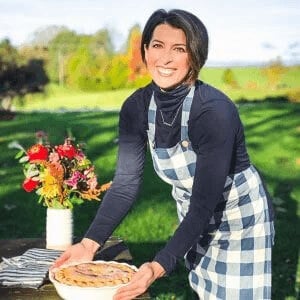
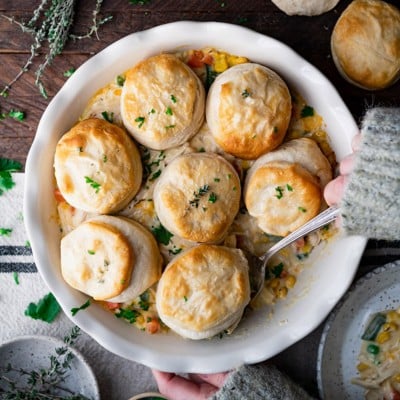
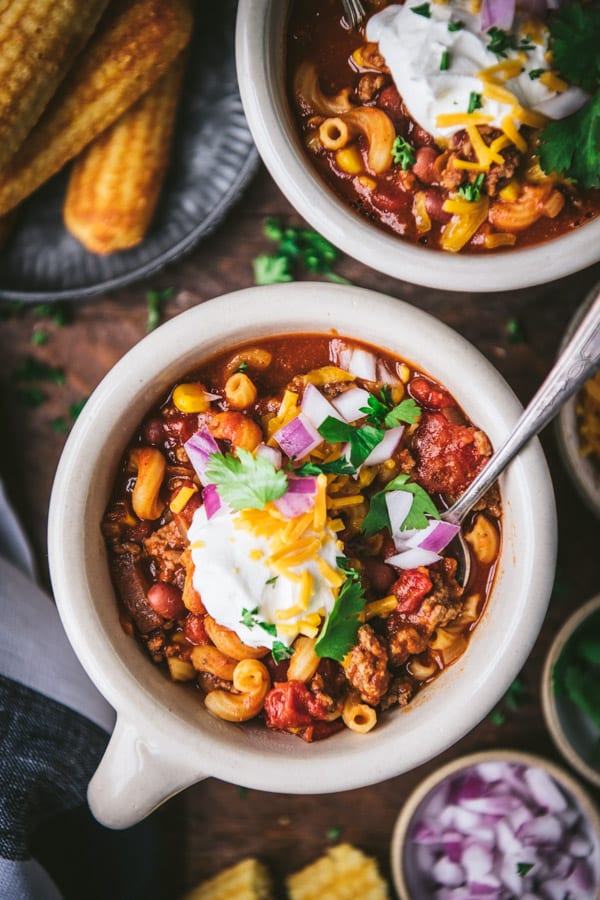
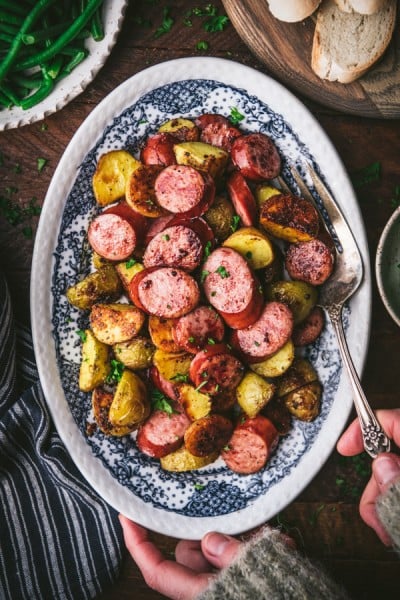








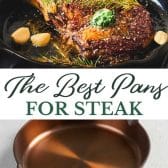
Have tried sous vide for your steak (also for chicken, salmon. pork chops’s etc… but different temps)… does take more time… I like 2 hours at 145 to sous vide steak to medium well… then a quick high temp sear (grill or pan).. Do you use a vacuum sealer. I’ve stopped boiling chicken breast for recipes and sous vide them… perfect, juicy nice.. but more time to do